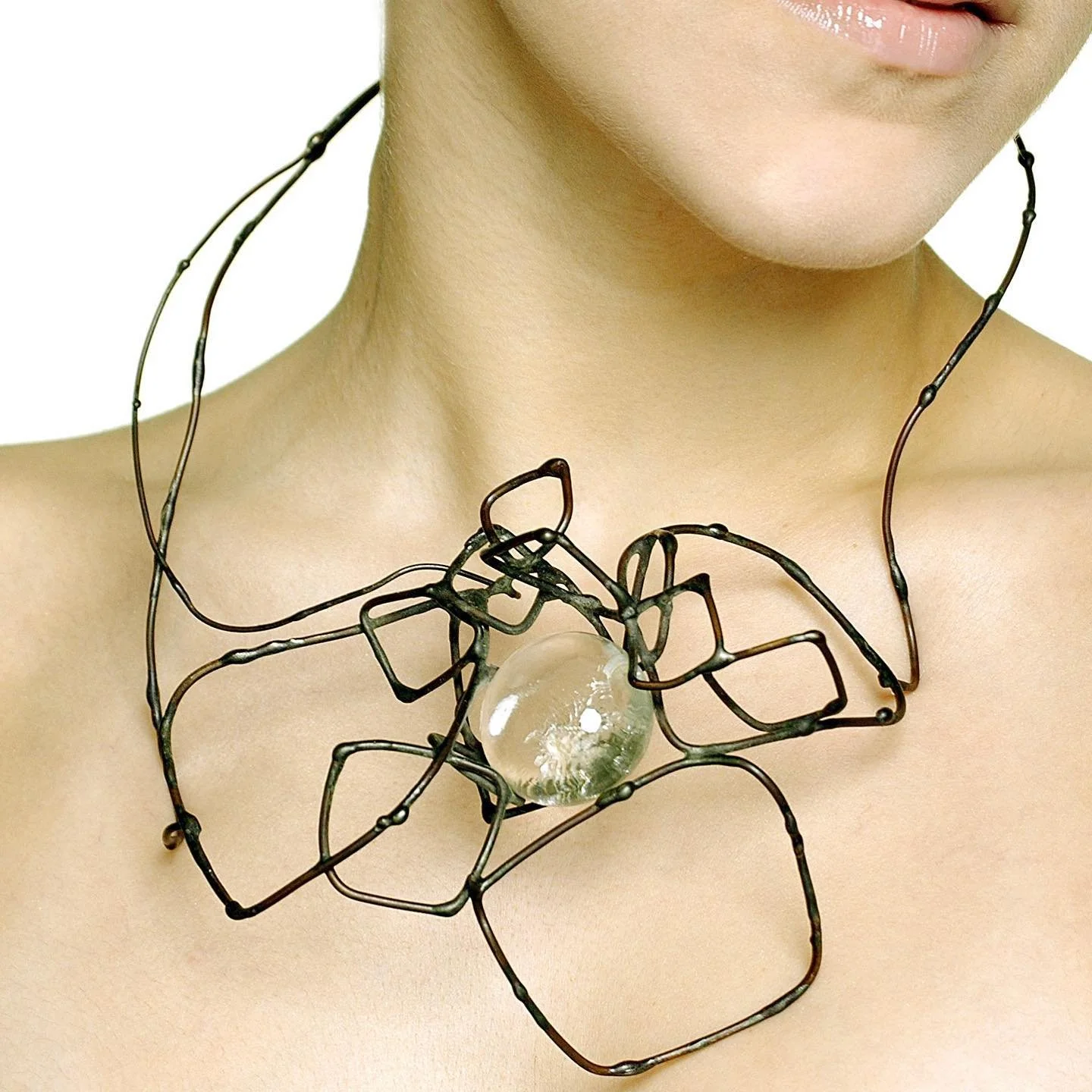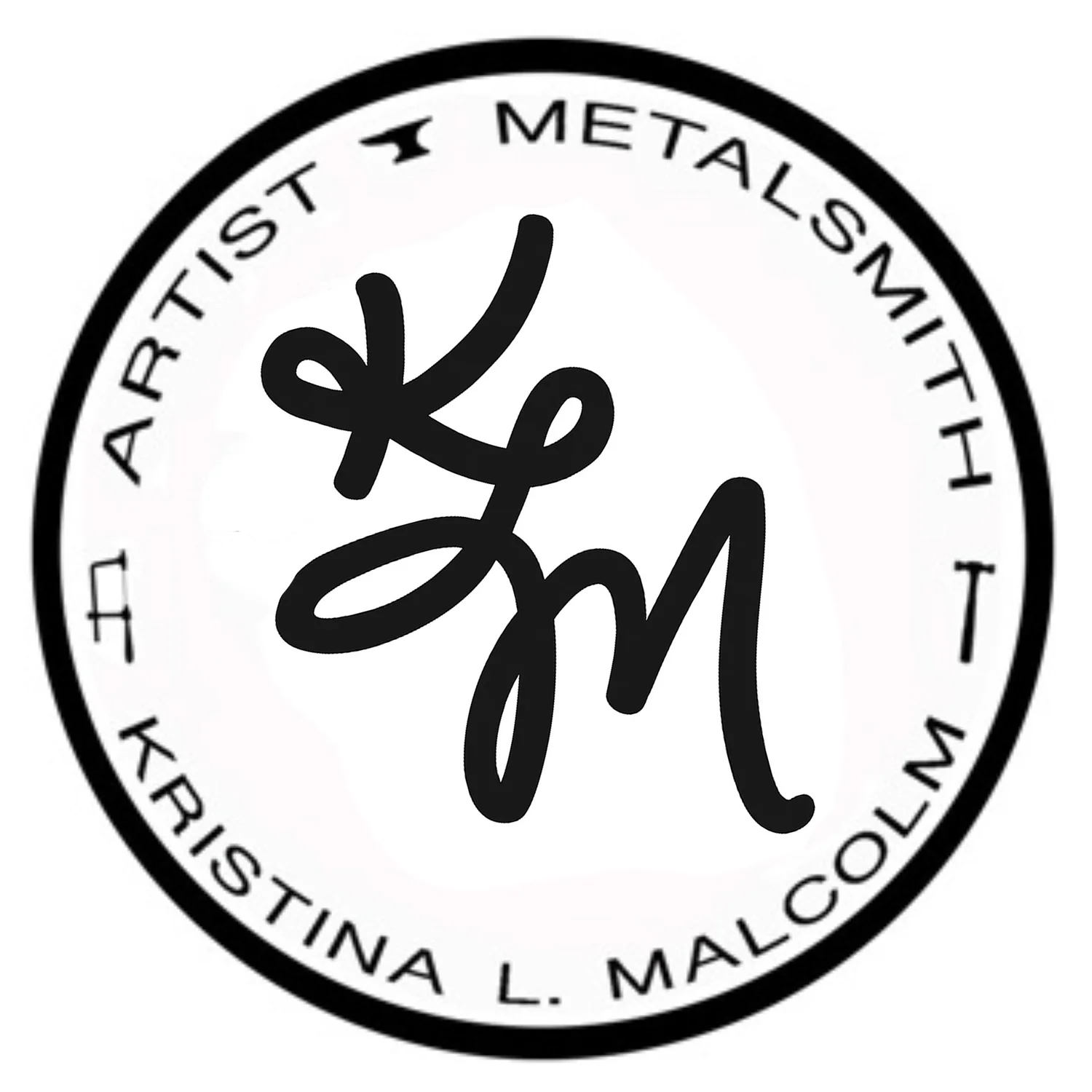
Claire Falkenstein: A Modernist Who Refused to Be Tamed
Claire Falkenstein was a woman who defied gravity—not only in the physical sense, but in the social, artistic, and historical senses as well. Born on July 22, 1908, in Coos Bay, Oregon, she grew up wild with wonder, riding horses along the beach in the dark and falling in love with science. That restless curiosity never left her. It lived in her hands, in her metal, in her fierce commitment to pushing form beyond its boundaries.
Falkenstein was a sculptor, a metalsmith, a painter, a printmaker, a jeweler, and a teacher. But more than any title, she was a force—untamed and unscripted. She forged new paths not just through material, but through ideology. She challenged the false hierarchy between fine art and craft, and refused to confine herself to one category. She didn’t need to “fit in”—she invented new spaces instead.
She began making jewelry in the 1940s as a way to bring her sculptures to the human body. It was never about decoration—it was about translation. Her works were extensions of her larger sculptures, explorations in space, line, and kinetic energy. She became a contemporary of Alexander Calder, but unlike Calder, Falkenstein's work rarely earned the spotlight it deserved. She didn’t court commercial success, and she didn’t settle in one place long enough to be pinned down by critics or curators. She was too busy making.
In post-WWII America, where women were expected to shrink or serve, Falkenstein expanded. Her art was radical not only for its formal innovation but for its refusal to ask permission. She worked in iron and glass, twisted copper, and shattered assumptions. Her wearable pieces were not subordinate to her sculptures—they were sculptures, intimate ones. Sculptures that moved with the body, that lived on skin.
And yet, she is often overlooked—her legacy scattered like her travels, her work under-documented, her name absent from too many textbooks. But absence does not equal insignificance. Falkenstein’s absence is a reflection of the systems that failed to see her, not the value of what she made.
Her life and work remind us that the boundaries between disciplines, like the boundaries placed on women, are meant to be broken. That art can be wild and free. That we do not need to choose between intellect and intuition, structure and spirit, body and object. We can have all of it.
She is a model for those who make without waiting for approval. For those who don’t ask if it’s art or craft or jewelry or sculpture. For those who simply begin, and keep going.

Mary Lee Hu
There’s something about Marys (in Ohio).
Maybe it’s just coincidence, but I like to think it’s something in the rustbelt air — all that history of forging, bending, rebuilding — that keeps calling out to Marys to pick up metal and make it tender.
There’s Mary Ann Scherr, born in Akron, who turned jewelry into tools of care, designing beautiful trach necklaces and heart monitors that helped people feel seen, not just treated.
There’s Mary Ellen McDermott, who lived and taught in Akron, Peninsula, and Cleveland, painting copper with molten glass. Her enamel work shimmers like tiny stained glass windows you can hold in your hand.
And then there’s Mary Lee Hu, from Lakewood, who wove gold so fine it nearly breathed. She was born by Lake Erie in 1943 and somehow carried the lake’s rippling patience with her. Over decades, she twisted tiny loops of wire into fabric-like sculptures that drape across the body. It’s a choreography of hands, breath, and steady attention that feels so close to how many of us soothe ourselves — through slow, tactile making.
There’s no neat story of depression or illness to pin to Mary Lee Hu the way we might with an Agnes Martin or a Frida Kahlo. But you can feel the same meditative pull in her process: the tiny, deliberate gestures that take chaos and turn it into something intricate, gentle, and strong.
I love the grace of that. The idea that through repetition — whether carving cuttlebone or looping gold wire — we can quiet our own storms, if only for a little while.
If you’ve got a favorite artist whose hands worked like this — slowly, patiently, turning mess into meaning — I’d love to hear.
